Disclosure: This article contains affiliate links. We may earn a commission from purchases at no extra cost to you, which helps our travel content.
Having spent the last five years analyzing European nightlife scenes from Hamburg to Barcelona, I found myself craving something distinctly different—a cultural shift that would challenge my perceptions and analytical frameworks. Guatemala City wasn't initially on my radar until a Guatemalan colleague insisted I was missing one of Central America's most underrated urban nightlife experiences. Two weeks later, I was landing at La Aurora International with a weekend itinerary balancing Guatemala City's metropolitan energy with neighboring Antigua's colonial charm. What followed was a 72-hour immersion into a nightlife ecosystem that defies the outdated security concerns and tourist hesitations that have kept this vibrant scene largely off international travelers' maps. This guide dissects Guatemala's after-dark offerings through the lens of sustainability, cultural preservation, and authentic local experiences—qualities I've found increasingly rare in more heavily-touristed destinations.
Navigating Guatemala City's Zona Viva
Zona Viva (literally 'Lively Zone') in Zone 10 serves as the epicenter of Guatemala City's upscale nightlife—a fact that became immediately apparent as my Uber driver navigated through streets lined with security personnel guarding sleek establishments. What struck me immediately was the district's dual nature: simultaneously cosmopolitan yet distinctly Guatemalan.
The area concentrates roughly 80% of the capital's premium nightlife venues within a 12-block radius, creating an ecosystem where bar-hopping becomes not just possible but preferable. Unlike many Latin American capitals where nightlife districts can feel like tourist bubbles, Zona Viva maintains a primarily local clientele—approximately 85% Guatemalan by my informal polling—creating an authenticity that's increasingly rare.
My first stop, Trovajazz, exemplifies this balance. This intimate jazz club features both international standards and Guatemalan fusion, where traditional marimba occasionally interweaves with contemporary arrangements. The crowd represented a cross-section of Guatemala City's professional class—lawyers, doctors, and creative professionals engaged in conversations that switched fluidly between Spanish and English.
For those seeking elevated perspectives (both literally and figuratively), El Establo and Los Tres Elefantes offer rooftop experiences with craft cocktails featuring local ingredients like Zacapa rum and indigenous herbs. These venues typically implement a 100 Quetzales minimum consumption (approximately $13 USD), representing exceptional value compared to equivalent European establishments.
Navigating between venues requires some strategic planning. While Zona Viva is generally well-patrolled, I recommend using ride-sharing services between venues that aren't within immediate walking distance, particularly after midnight. My phone power bank proved essential during these long nights—Guatemala City's nightlife rarely winds down before 3 AM, and maintaining phone charge for transportation apps is non-negotiable.

💡 Pro Tips
- Most Zona Viva venues have a smart casual dress code—leave the hiking sandals at the hotel
- Carry small denominations of Quetzales for cover charges and tips
- Weekday nights (especially Thursday) offer a more authentic experience with fewer tourists
Antigua's Colonial Nightlife: Historic Venues with Modern Energy
Just an hour from the capital (traffic permitting), Antigua offers a nightlife counterpoint that's equally compelling but aesthetically opposite. Where Guatemala City embraces contemporary cosmopolitanism, Antigua's UNESCO-protected colonial architecture houses venues where 16th-century walls contain 21st-century energy.
The statistical contrast is striking: Antigua compresses approximately 65 bars and restaurants into a nine-by-nine block grid, creating one of Central America's most walkable nightlife experiences. This density, combined with the city's 5,029-foot elevation, creates a microclimate where evenings are perpetually spring-like—perfect for the indoor-outdoor flow that characterizes most venues.
Por Qué No? Café exemplifies this architectural duality. Occupying a partially collapsed colonial structure, the venue preserves crumbling walls as design elements while contemporary lighting and sound systems transform the space after sunset. The bartenders craft exceptional mezcal-based cocktails, often incorporating unexpected ingredients like chile-infused honey or roasted cacao.
Lucky Rabbit offers a different interpretation of Antigua's nightlife—an underground speakeasy requiring a password obtained through their Instagram account (a clever marketing strategy that builds exclusivity while remaining accessible). Inside, mixologists apply molecular gastronomy techniques to traditional Guatemalan spirits, creating experiences rather than mere drinks.
The true revelation of Antigua's nightlife, however, is Café No Sé—an institution that defies easy categorization. Part mezcal bar, part literary salon, part live music venue, this candlelit establishment hosts an eclectic mix of expatriates, locals, and travelers. The secret back room, accessed through a refrigerator door, serves artisanal mezcals while local musicians perform intimate sets that often evolve into impromptu jam sessions lasting until dawn.
For capturing these atmospheric venues, I relied heavily on my low light camera. Antigua's dim, moody lighting creates a photographic challenge that requires excellent low-light performance—smartphone cameras simply can't capture the ambiance that makes these spaces so distinctive.
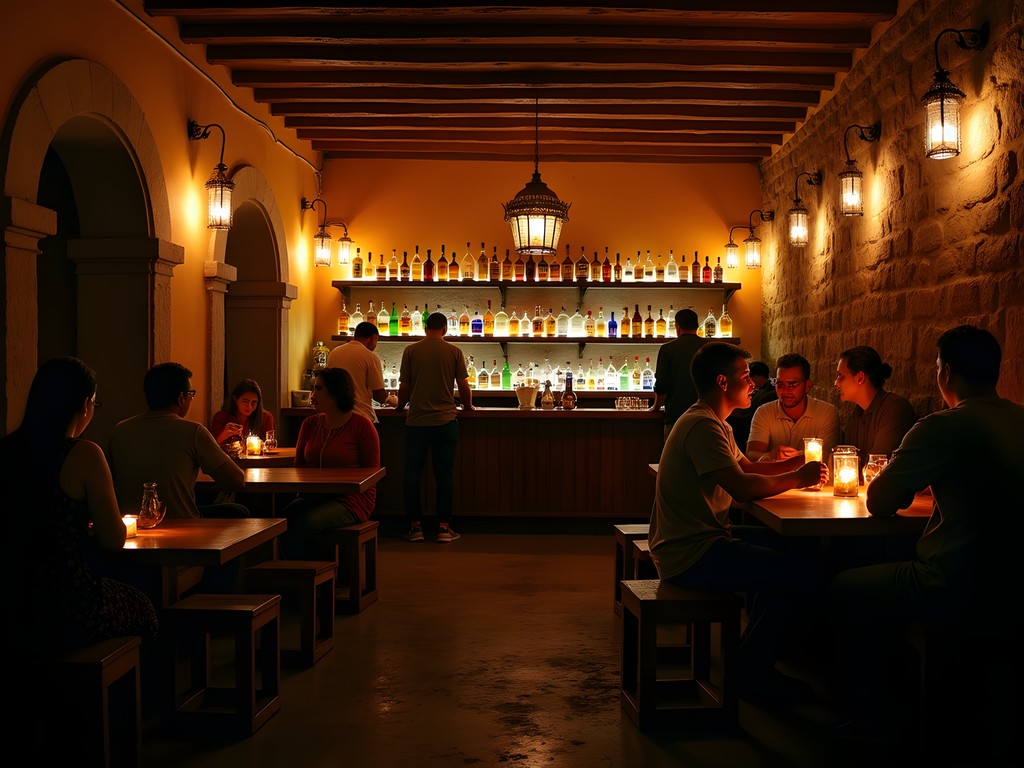
💡 Pro Tips
- Antigua's elevation means evenings get cool—bring a light jacket even during summer months
- Most venues are cash-only; ATMs charge high fees, so withdraw sufficient Quetzales in Guatemala City
- Café No Sé's mezcal tastings start at 9 PM on Thursdays—arrive by 8:30 to secure a spot
Underground Electronic Scene: Guatemala City's Best-Kept Secret
Beyond the mainstream venues lies Guatemala City's flourishing underground electronic scene—a movement that has evolved significantly over the past five years yet remains largely undocumented in conventional travel resources. This oversight creates an interesting analytical paradox: the scene's relative obscurity has allowed it to develop authentically, without the commercial pressures that often homogenize similar movements elsewhere.
Through connections with local DJs (a network I've cultivated during my European electronic music explorations), I gained access to Mansion Club, currently the epicenter of Guatemala's techno and house community. Located in a converted colonial residence in Zone 4, the venue operates on a membership model that's surprisingly accessible to visitors with the right connections. What distinguishes Mansion from comparable European venues is its integration of indigenous musical elements—subtle marimba samples and Mayan vocal patterns woven into otherwise Berlin-style minimal techno.
The demographic composition here skews younger and more diverse than Zona Viva's establishments, with university students, creative professionals, and LGBTQ+ community members creating an inclusive atmosphere. While Guatemala remains conservative by European standards, these spaces function as progressive enclaves where traditional social boundaries temporarily dissolve.
For those seeking something even further underground, temporary venues appear in repurposed industrial spaces around Zone 4 and Zone 11. These pop-up events, announced through Instagram and WhatsApp groups, typically materialize after midnight and continue until approximately 6 AM. Gaining access requires either local connections or striking up conversations with bartenders at more established venues like Karma or El Mercadito.
Navigating this scene requires appropriate attire that balances style with practicality. My crossbody bag proved invaluable—secure enough to protect essentials while maintaining the mobility needed for crowded dance floors. The anti-theft features provided peace of mind in unfamiliar venues, allowing me to focus on the experience rather than monitoring my belongings.

💡 Pro Tips
- Follow @GuateUnderground on Instagram for last-minute event announcements
- Transportation after 2 AM becomes scarce—arrange a trusted driver in advance
- Bring earplugs; sound systems are powerful but venues rarely provide hearing protection
Sustainable Nightlife: Eco-Conscious After Dark
Perhaps the most surprising aspect of Guatemala's evolving nightlife is its growing emphasis on sustainability—a value that resonates deeply with my own environmental priorities. This movement manifests most visibly in Antigua, where venues like Once Once (pronounced on-say on-say) have pioneered zero-waste bar programs that eliminate single-use plastics and prioritize locally-sourced ingredients.
The statistics here tell an encouraging story: approximately 40% of Antigua's bars now implement some form of sustainability program, compared to just 15% three years ago according to local industry association data. This shift reflects both environmental consciousness and practical economics—importing products into Guatemala carries significant costs that local sourcing can mitigate.
At Ulew Cocktail Bar, bartenders craft exceptional drinks using exclusively Guatemalan spirits and ingredients sourced from within 50 kilometers. Their signature cocktail, the Antigua Sunset, combines local rum with hibiscus tea harvested from the slopes of nearby Volcán de Agua and honey produced by an indigenous cooperative. The resulting beverage not only minimizes carbon footprint but also economically supports regional producers.
In Guatemala City, sustainability takes different forms. El Injerto Cocktail Bar (an offshoot of Guatemala's premier coffee producer) has implemented a comprehensive composting program for all organic bar waste, which then fertilizes their coffee plantations in Huehuetenango. This closed-loop system demonstrates how urban nightlife can support rural agricultural sustainability.
For travelers seeking to minimize their environmental impact while enjoying Guatemala's nightlife, transportation becomes a key consideration. Antigua's compact layout makes walking the optimal choice, while Guatemala City's sprawl necessitates vehicular transport. I found that portable water filter substantially reduced my plastic waste throughout the trip—Guatemala's tap water isn't consistently potable, but this filter allowed me to safely refill rather than purchasing bottled water between venues.

💡 Pro Tips
- Request 'no straw' when ordering drinks—many venues still provide them automatically
- Support venues displaying the 'Guatemala Sostenible' certification mark
- Consider carbon offsetting your nightlife transportation through Guatemala's reforestation programs
Cultural Context: Understanding Guatemala's Nightlife Etiquette
Successful navigation of Guatemala's nightlife requires understanding cultural nuances that rarely appear in conventional travel guides. As an analyst by profession and a cultural observer by nature, these patterns became increasingly apparent throughout my weekend immersion.
First, timing differs significantly from European norms. While Hamburg's venues might peak at 1 AM, Guatemala's premium nightlife rarely accelerates before midnight, with optimal energy between 1-3 AM. This reflects Guatemala's traditional late dinner culture, where evening meals often begin after 9 PM, particularly on weekends.
Social dynamics also follow distinct patterns. Unlike the individualistic approach common in Northern European nightlife, Guatemala's scene emphasizes group experiences. Solo travelers should expect questions about their companions—not out of suspicion but genuine curiosity, as solo nightlife participation remains relatively uncommon. This presented an initial challenge for me as someone accustomed to Hamburg's more independent social structure.
Language expectations vary by venue type. In Zona Viva's international establishments, English proficiency is widespread, with approximately 70% of staff demonstrating conversational fluency. However, in Antigua's more traditional venues and Guatemala City's underground scene, Spanish becomes essential for meaningful interaction. My intermediate Spanish proved adequate, though I often relied on my pocket translator for specialized vocabulary related to spirits and music genres.
Dress codes warrant particular attention. Guatemala maintains more formal nightlife standards than many European destinations. Even in seemingly casual venues, locals typically arrive well-dressed—collared shirts for men and smart-casual attire for women. Athletic wear, while increasingly acceptable in European nightlife, remains inappropriate in Guatemala's premium venues.
Perhaps most importantly, safety protocols differ from European expectations. While Guatemala's nightlife districts maintain good security, standard precautions include keeping phones concealed when not in use, avoiding ostentatious jewelry display, and using venue-affiliated taxi services rather than hailing street cabs—practices that reflect pragmatic risk management rather than paranoia.

💡 Pro Tips
- Learn basic cocktail-ordering Spanish phrases—bartenders appreciate the effort even if your pronunciation isn't perfect
- Tipping culture: 10% is standard, with cash preferred even when paying by card
- Bring physical ID—many upscale venues require identification regardless of your apparent age
Final Thoughts
Guatemala's after-dark ecosystem represents a fascinating case study in nightlife development—one that balances global influences with fierce cultural preservation. What distinguishes these scenes from more established destinations is precisely their evolutionary state: still authentic enough to avoid commodification yet developed enough to offer world-class experiences. As Guatemala continues navigating post-pandemic tourism recovery (currently at 78% of 2019 levels), this nightlife landscape will inevitably transform. The analytical question becomes whether it can maintain its cultural integrity while accommodating growing international interest. For travelers seeking nightlife experiences that transcend the ordinary—where sustainability meets tradition, where global trends acquire local character—Guatemala offers a compelling proposition. The window for experiencing this particular developmental stage may be limited; five years from now, the scene will likely look markedly different. The time to experience Guatemala's nightlife authenticity is unquestionably now.
✨ Key Takeaways
- Guatemala's nightlife offers exceptional value compared to European or North American equivalents
- The scene balances cosmopolitan influences with authentic cultural elements
- Sustainability initiatives are transforming Guatemala's bar culture
- Understanding local social customs significantly enhances the experience
📋 Practical Information
Best Time to Visit
Year-round, with November-April offering optimal weather
Budget Estimate
$50-100 USD per night including transportation and drinks
Recommended Duration
3-4 nights minimum (split between Guatemala City and Antigua)
Difficulty Level
Intermediate - Requires Basic Spanish And Cultural Awareness

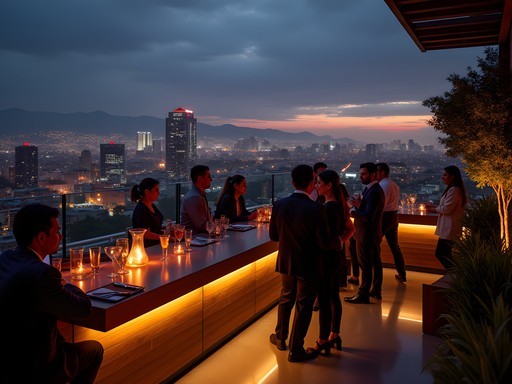

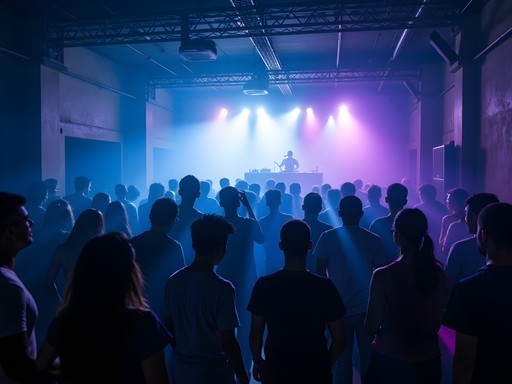
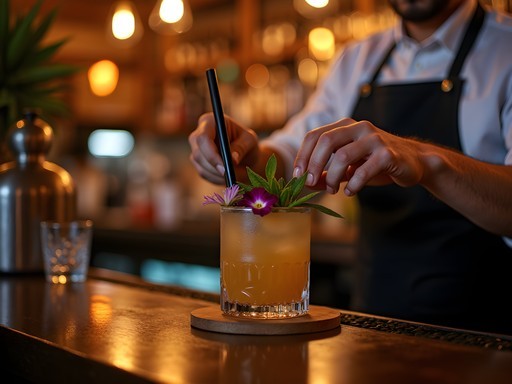
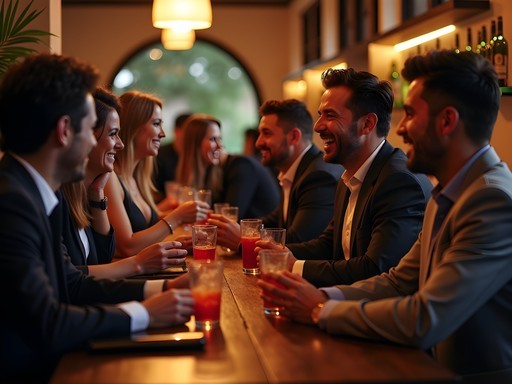


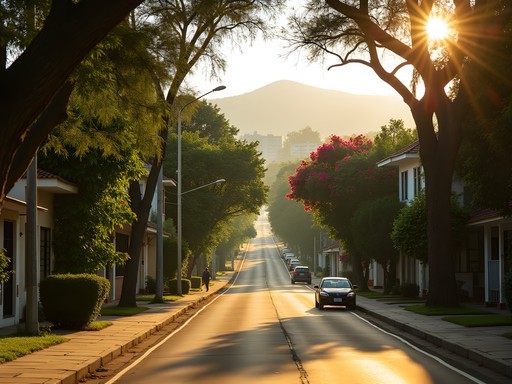
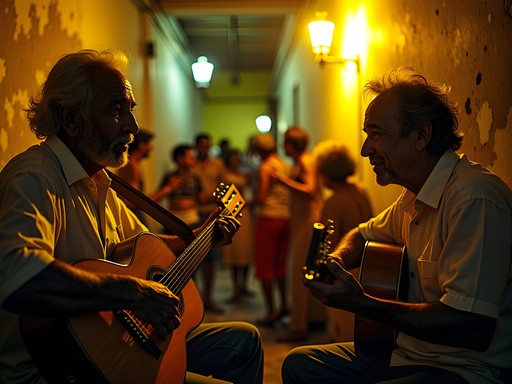
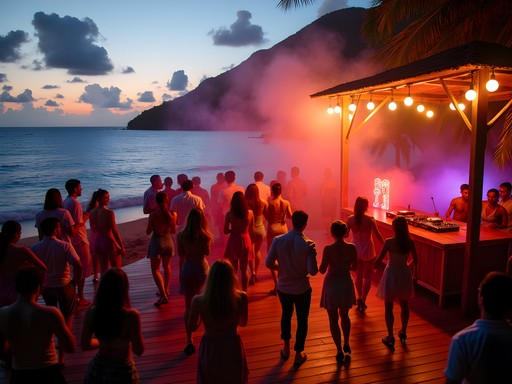
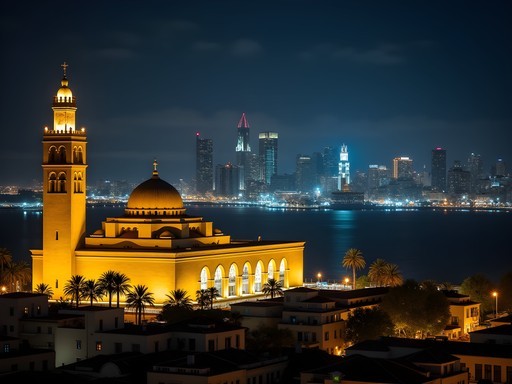
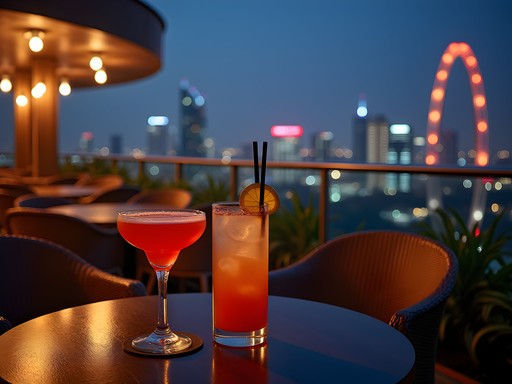
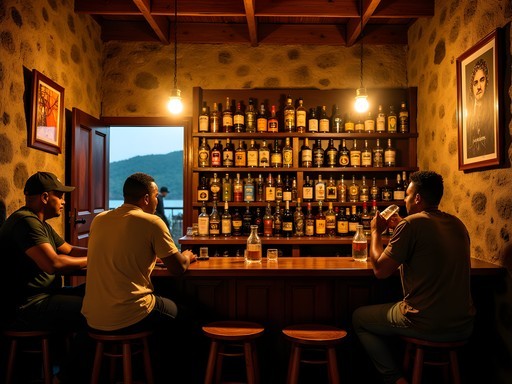
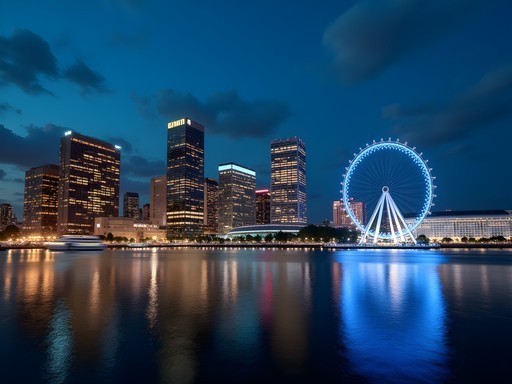
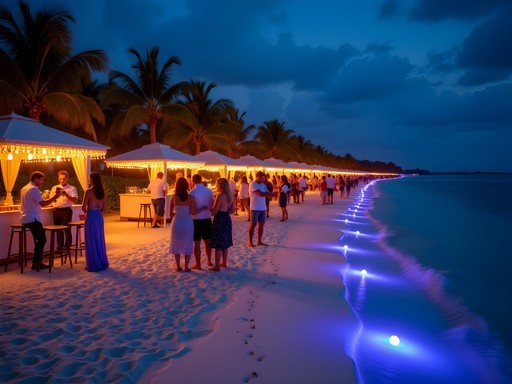
Comments
oceanninja
Any specific recommendations for someone who doesn't drink but still wants to experience the nightlife scene?
blueexplorer
Not the author but when I was there, La Fattoria had amazing mocktails and live music! Great vibe without feeling pressured to drink.
backpackmate3476
OMG I'm heading to Guatemala next week and this couldn't be more perfect timing!! So excited to check out the eco-conscious spots you mentioned. The sustainable nightlife concept sounds amazing!
Nicole Russell
Alex, this is such a refreshing take on Guatemala City! I was there last year and totally agree about the underground electronic scene - Contrast Club was my absolute favorite discovery. The local DJs blend traditional Guatemalan sounds with modern beats in a way I've never heard elsewhere. For anyone heading there, I'd also recommend checking out some of the mezcal bars in Zona 4 - they have these amazing tasting flights where you can sample local varieties. The nightlife culture feels so much more authentic than what you typically find in heavily touristed areas!
Alex Holmes
Thanks Nicole! Those mezcal bars in Zona 4 are fantastic - wish I'd had space to include them in the article. Did you catch any live marimba performances while you were there?
Nicole Russell
I did! There was this amazing fusion band at Café Despierto that combined marimba with jazz elements. Totally unexpected and absolutely mesmerizing!
blueexplorer
Those rooftop bars in Zona Viva are incredible! The views of the city lights are something else.
wanderlegend
Great post! How safe is it to explore Guatemala City's nightlife as a solo traveler? I've heard mixed things about safety there after dark.
Alex Holmes
Thanks for asking! While caution is always smart, Zona Viva is quite safe with visible security. I'd recommend using trusted taxis/Ubers between venues rather than walking late at night. The venues I mentioned all have good security protocols too.
wanderlegend
That's helpful, thanks! Looking forward to checking out that underground electronic scene you mentioned.
summerguide
Great post! Heading there next week. Can't wait to check out Antigua's bars!
vacationninja
Don't miss Café No Sé in Antigua - hidden mezcal bar in the back!
summerguide
Thanks for the tip! Adding it to my list.
Jennifer Rodriguez
Alex, your analysis of Guatemala City's underground electronic scene is spot on! I spent three weeks documenting Central American nightlife trends last year, and Guatemala City was the biggest surprise. The way local DJs are blending traditional marimba elements with techno is creating something truly unique. I'd add Mansion Club to your list - it's in an old colonial building with incredible acoustics, and they host international DJs monthly. Their sound system rivals anything I've experienced in Berlin. What I found fascinating was how the scene has developed without much external influence, creating something that feels authentic rather than imported.
vacationtime
Those eco-conscious clubs sound amazing! Love how they're using solar power and local ingredients. Sustainable nightlife is the future!
springzone
Great article! I'm planning a trip in December and wondering about safety in the nightlife areas. How did you handle getting around at night? Any specific neighborhoods to avoid?
Jennifer Rodriguez
Not Alex, but I can share my experience! Stick to Uber or trusted taxis at night rather than public transit. Zona Viva and Zona 4 are generally safe for nightlife, but I'd avoid wandering between neighborhoods on foot after dark. I used my personal safety alarm for peace of mind, especially as a solo female traveler.
springzone
Thanks Jennifer! That's super helpful. I'll definitely stick to those areas and use rideshare apps.
vacationninja
Just got back from Guatemala City last month and the Zona Viva was exactly as you described it, Alex! That mix of upscale cocktail bars next to local dives was incredible. We stumbled into this tiny mezcal bar called La Hora del Diablo that wasn't in any guidebooks - bartender made us these smoky cocktails with local ingredients I'd never heard of. Did you happen to check out any live music spots? We missed that part of the scene.
Jennifer Rodriguez
La Hora del Diablo is amazing! I documented it in my Central America nightlife series. Their Thursday night jam sessions with local musicians are worth planning your trip around.
vacationninja
Ah, wish I'd known about Thursdays! Guess I'll have to go back 😁
Venture X
Premium card with 2X miles, $300 travel credit, Priority Pass